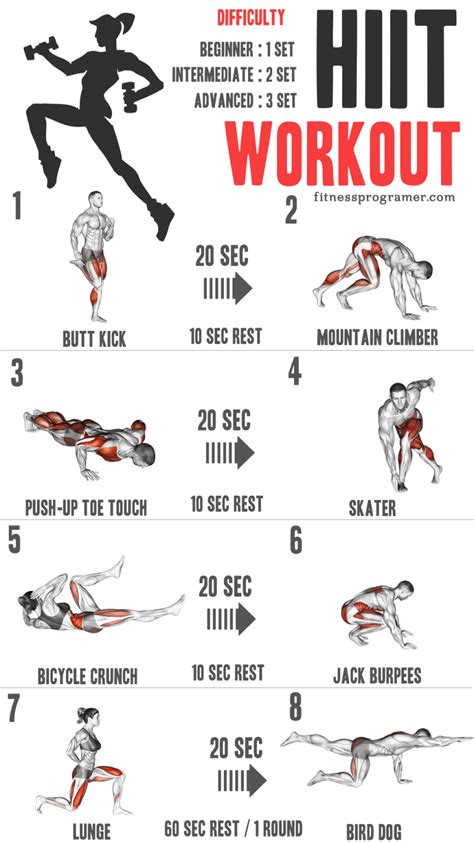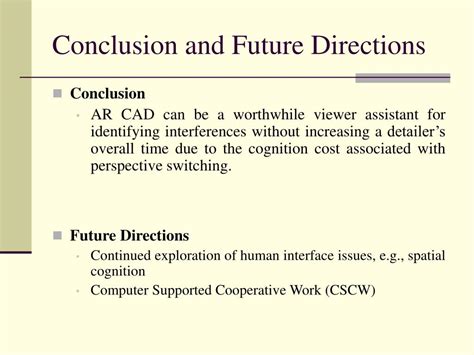Intro
Discover 7 effective ways HIIT burns fat, boosting metabolism and weight loss with high-intensity interval training, intense workouts, and calorie burn exercises.
High-Intensity Interval Training, commonly referred to as HIIT, has become a popular method for burning fat and improving overall fitness. The importance of incorporating effective workout routines into our daily lives cannot be overstated, especially considering the rising concerns about obesity and related health issues. As people seek efficient and result-driven exercise methods, HIIT stands out due to its ability to deliver significant benefits in a short amount of time. This approach to fitness not only helps in shedding unwanted pounds but also enhances cardiovascular health, increases metabolism, and boosts muscle strength. For those looking to embark on a journey to a healthier, leaner self, understanding the mechanisms through which HIIT operates is crucial.
The appeal of HIIT lies in its simplicity and effectiveness. Unlike traditional workout methods that require hours at the gym, HIIT can be adapted to fit even the busiest of schedules. It involves short bursts of intense exercise followed by brief periods of rest or low-intensity exercise. This cycle is repeated for a duration that can range from 15 to 45 minutes, depending on the specific routine and the individual's fitness level. The intensity of HIIT workouts stimulates the body in unique ways, leading to enhanced fat burning, both during and after the exercise session. As the body adapts to the demands of HIIT, improvements in endurance, strength, and overall physical fitness become noticeable.
For individuals seeking to maximize their fat-burning potential, HIIT offers a promising solution. The science behind HIIT's effectiveness in fat burning is rooted in its impact on the body's metabolic rate, the way it utilizes stored fat for energy, and its role in building muscle mass. Muscle tissue requires more calories to maintain than fat tissue, which means that as muscle mass increases through HIIT, so does the resting metabolic rate, leading to more calories being burned at rest. Furthermore, the intense nature of HIIT workouts triggers an afterburn effect, known as excess post-exercise oxygen consumption (EPOC), where the body continues to burn more calories than usual after the workout is completed. This phenomenon significantly contributes to the fat-burning process, making HIIT a valuable addition to any weight loss regimen.
Understanding HIIT and Its Benefits

Understanding the principles of HIIT and how it compares to other forms of exercise is essential for appreciating its benefits. Traditional steady-state cardio, such as jogging or cycling at a constant pace, can be effective for burning calories during the workout. However, it often lacks the intensity and variability that HIIT provides, which are crucial for stimulating significant metabolic changes and muscle growth. In contrast, HIIT workouts, with their high-intensity intervals and active recovery periods, offer a holistic approach to fitness, addressing both cardiovascular health and muscular endurance. The benefits of HIIT extend beyond the gym, improving daily energy levels, enhancing sleep quality, and supporting overall well-being.
The Science Behind HIIT's Fat-Burning Mechanism

The science behind HIIT's fat-burning mechanism is multifaceted, involving physiological responses that optimize the body's use of fat as an energy source. During intense exercise, the body initially relies on stored glycogen for energy. However, as the workout progresses and glycogen stores are depleted, the body begins to break down fat for energy, a process facilitated by the release of certain hormones and enzymes. HIIT's intermittent nature allows for periods of recovery, which, although crucial for replenishing energy stores, also contribute to the continued breakdown of fat. This dual effect of intense exercise and strategic recovery makes HIIT particularly adept at stimulating fat loss.
Key Factors Influencing HIIT's Effectiveness
Several factors can influence the effectiveness of HIIT in burning fat, including the intensity of the workouts, the duration of the high-intensity intervals, the type of exercises included, and the individual's diet and overall lifestyle. For instance, incorporating strength training exercises into HIIT routines can further enhance fat loss by increasing muscle mass. Similarly, a diet that supports the energy demands of HIIT, focusing on protein, complex carbohydrates, and healthy fats, can optimize the body's ability to burn fat and recover from workouts.
Implementing HIIT into Your Fitness Routine

Implementing HIIT into your fitness routine can be straightforward, with numerous resources available for designing personalized workouts. It's essential to start slowly, especially for those new to high-intensity exercise, to allow the body to adapt and reduce the risk of injury. Beginners might begin with shorter intervals of intense exercise followed by longer recovery periods, gradually increasing the intensity and duration as fitness levels improve. Incorporating a variety of exercises, such as sprints, burpees, jump squats, and mountain climbers, can help keep workouts engaging and prevent plateaus.
Sample HIIT Workout Routines
- Beginner Routine: 30 seconds of jump squats followed by 30 seconds of rest, repeated for 15 minutes.
- Intermediate Routine: Sprints for 45 seconds, followed by 15 seconds of rest, repeated for 20 minutes.
- Advanced Routine: Burpees for 60 seconds, followed by 30 seconds of rest, repeated for 25 minutes.
Nutritional Support for HIIT

Nutritional support plays a critical role in maximizing the benefits of HIIT. A balanced diet that includes lean proteins, complex carbohydrates, and healthy fats is essential for providing the necessary energy for workouts and supporting the recovery process. Hydration is also vital, as adequate water intake helps in regulating body temperature and transporting nutrients to cells. Additionally, considering the timing of meals in relation to workouts can optimize performance and recovery. For example, consuming a meal or snack rich in carbohydrates and protein about an hour before a HIIT session can help maintain energy levels throughout the workout.
Common Mistakes to Avoid in HIIT

Despite its effectiveness, there are common mistakes to avoid when incorporating HIIT into your fitness routine. Overtraining is a significant risk, as the high intensity of these workouts can lead to burnout and injury if not balanced with adequate recovery time. Ignoring proper form and technique during exercises can also lead to injuries, undermining the benefits of HIIT. Furthermore, neglecting to incorporate a balanced diet and sufficient hydration can hinder performance and the body's ability to recover from workouts.
Strategies for Avoiding Burnout
- Listen to Your Body: Rest when needed, and don't push through pain.
- Variety in Workouts: Change exercises regularly to avoid boredom and prevent overuse injuries.
- Gradual Progression: Increase intensity and duration gradually to allow for adaptation.
Conclusion and Future Directions

In conclusion, HIIT presents a powerful tool for those seeking to enhance their fat-burning capabilities and improve overall fitness. By understanding the science behind HIIT, incorporating it into a well-rounded fitness routine, and supporting workouts with a balanced diet and lifestyle, individuals can unlock the full potential of this training method. As research continues to uncover the benefits and optimal implementation strategies for HIIT, it's clear that this form of exercise will remain a cornerstone of fitness regimens for years to come.
What is HIIT and how does it work?
+HIIT stands for High-Intensity Interval Training, a method of exercise that involves short bursts of high-intensity workouts followed by brief periods of rest or low-intensity exercise. It works by stimulating significant metabolic changes, enhancing fat burning, and improving cardiovascular health.
How often should I do HIIT workouts?
+The frequency of HIIT workouts depends on your fitness level and goals. Generally, 2-3 times per week is a good starting point, allowing for adequate recovery time between sessions.
Can anyone do HIIT, or are there certain health considerations?
+While HIIT can be adapted for various fitness levels, it's essential to consult with a healthcare provider before starting any new exercise program, especially if you have any underlying health conditions. Modifications can be made to accommodate different needs and abilities.
For those who have reached the end of this article, we invite you to share your thoughts and experiences with HIIT in the comments below. Whether you're a seasoned athlete or just starting your fitness journey, HIIT offers a versatile and effective approach to achieving your health and wellness goals. Don't hesitate to reach out with questions or to share this valuable information with others who might benefit from the transformative power of HIIT.
